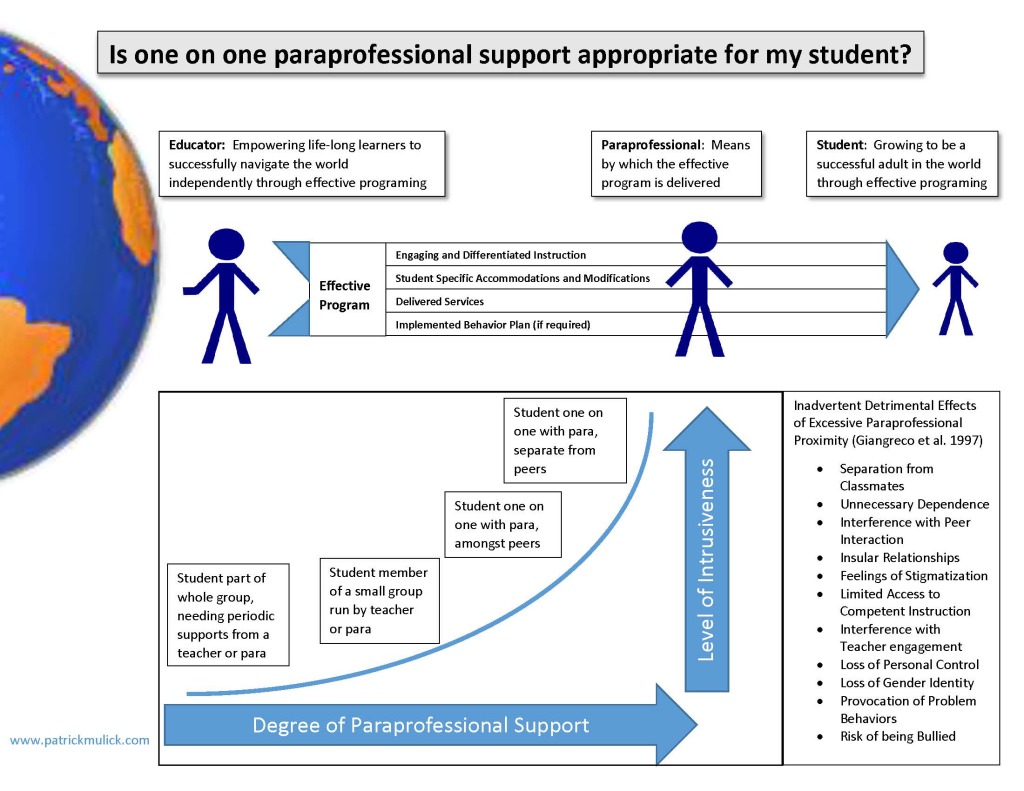Greater challenges from a student often lends itself to a need for greater supports, and in the eyes of many there is no better support than the acquisition of a one on one paraprofessional for a student. It is this blanket response to challenges in the schoolhouse that can inhibit growth and create a culture of overdependence on adults. Students with severe disabilities spend at least 80% of their time in close proximity (2ft) to paraprofessionals (Moreno 2011). While this level of support may seem to be appropriate in order to meet high needs, it is clear that there are inadvertent effects of paraprofessional proximity (Giangreco et al. 1997) that are often overlooked.
This is not to say that one on one paraprofessionals are a unnecessary, but rather their role is often perceived incorrectly. They are some of the most patient people you will ever meet, but they are alone are not the answer. A paraprofessional, specifically a one on one, is a means by which a program is implemented. It is the teacher’s role to lead the instruction for all students, introducing them to the world and the skills they will need to be successful. For our special needs students they are simultaneously receiving supports according to their IEP and/or behavior plan. As discussed here, that detailed planning is instrumental to their success. A paraprofessional is a means by which the specific details of a child’s program can be carried out in lieu of it being impractical for a teacher to provide while also supporting all other learners in the classroom. So in relation to the question of “do I need a para?”, the program always comes before the person.
To do right by a student, we need to ensure that we are first detailing out the specifics of what a thoroughly detailed program will entail in order to meet the high needs before we jump to how we can meet them. If our reasoning for this support is so that someone can loom over the learner reminding them to get back to work or to stop interrupting, then I would propose the team go back to the drawing board in their planning. And if that support is needed, we must examine to what degree and at what moments it will be provided. Only when attention is given to such small detail can we maximize student independence and learning.
There is such a small window of time in which we have an opportunity to share with students how to navigate the world, and the world does not have one on one paraprofessionals. However it does have smartphones, 9-1-1 operators, maps, directories, bus schedules, and help desks. The more we can help our learners become reliant on what most peers use for help, the stronger they will be in life. Students deserve the best of us. Not from the most of us, but all of us. And in giving our most, we can teach them to rely on us the least. It is how we bring out the best in all of them.





